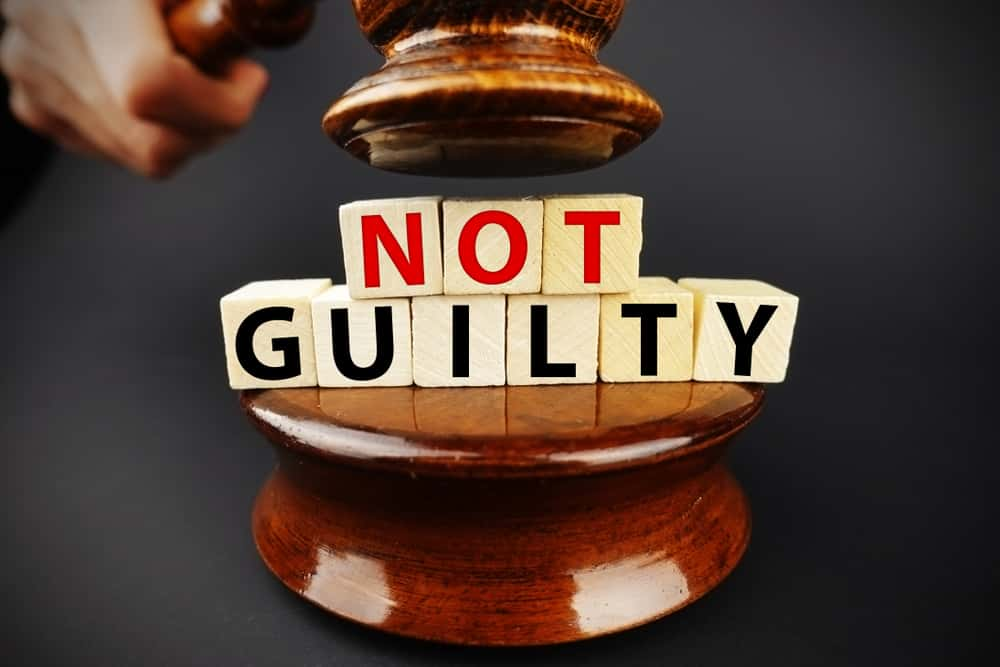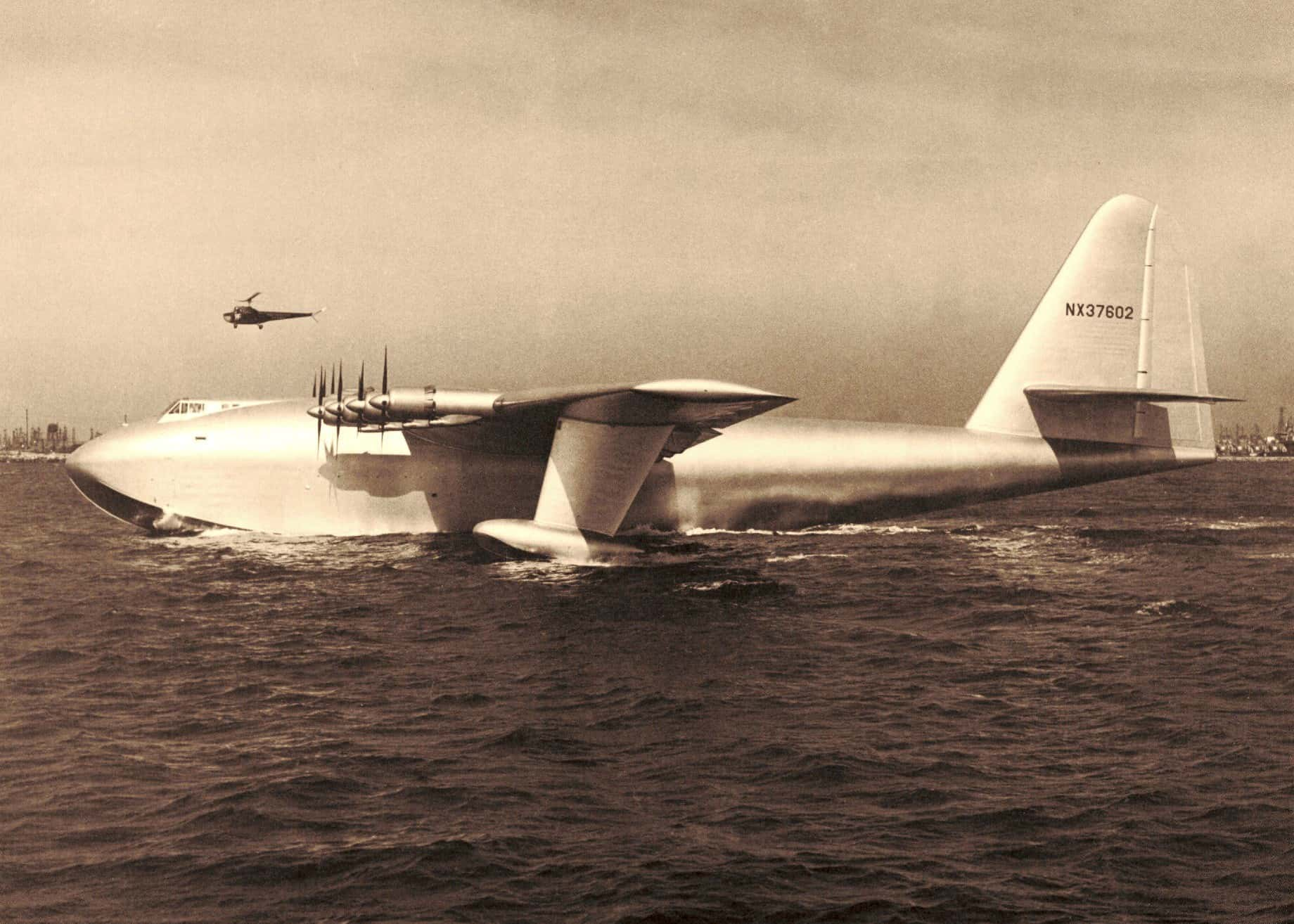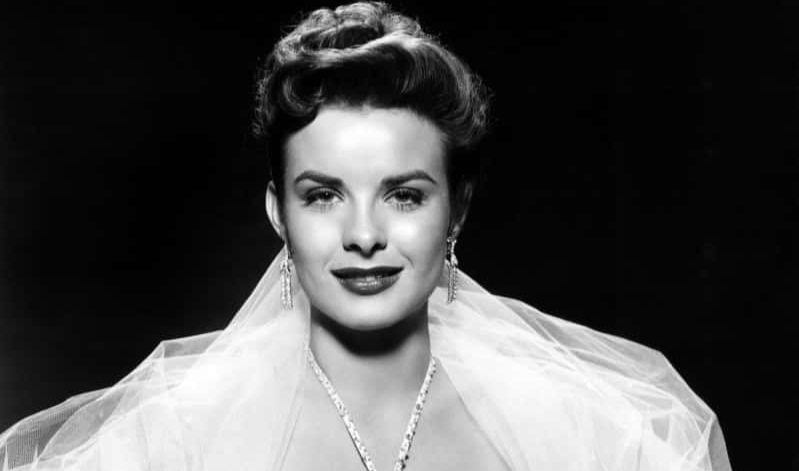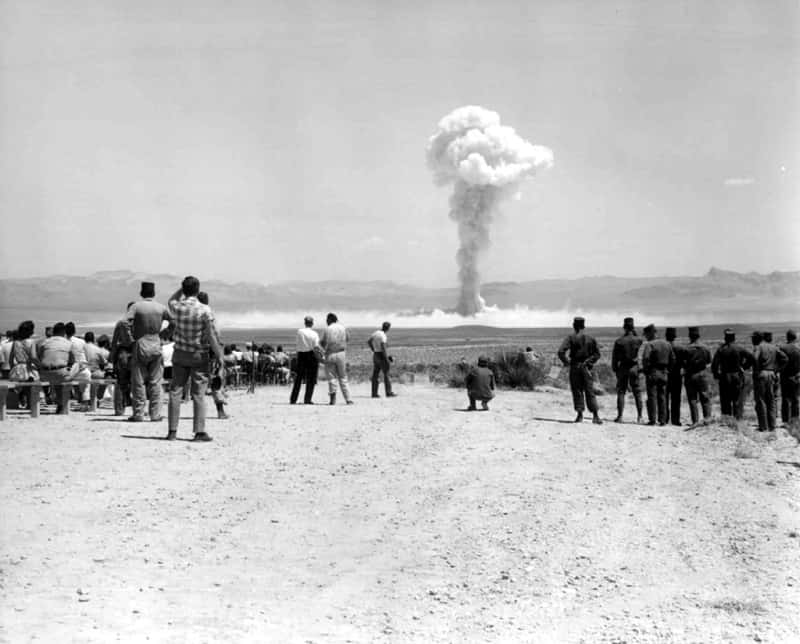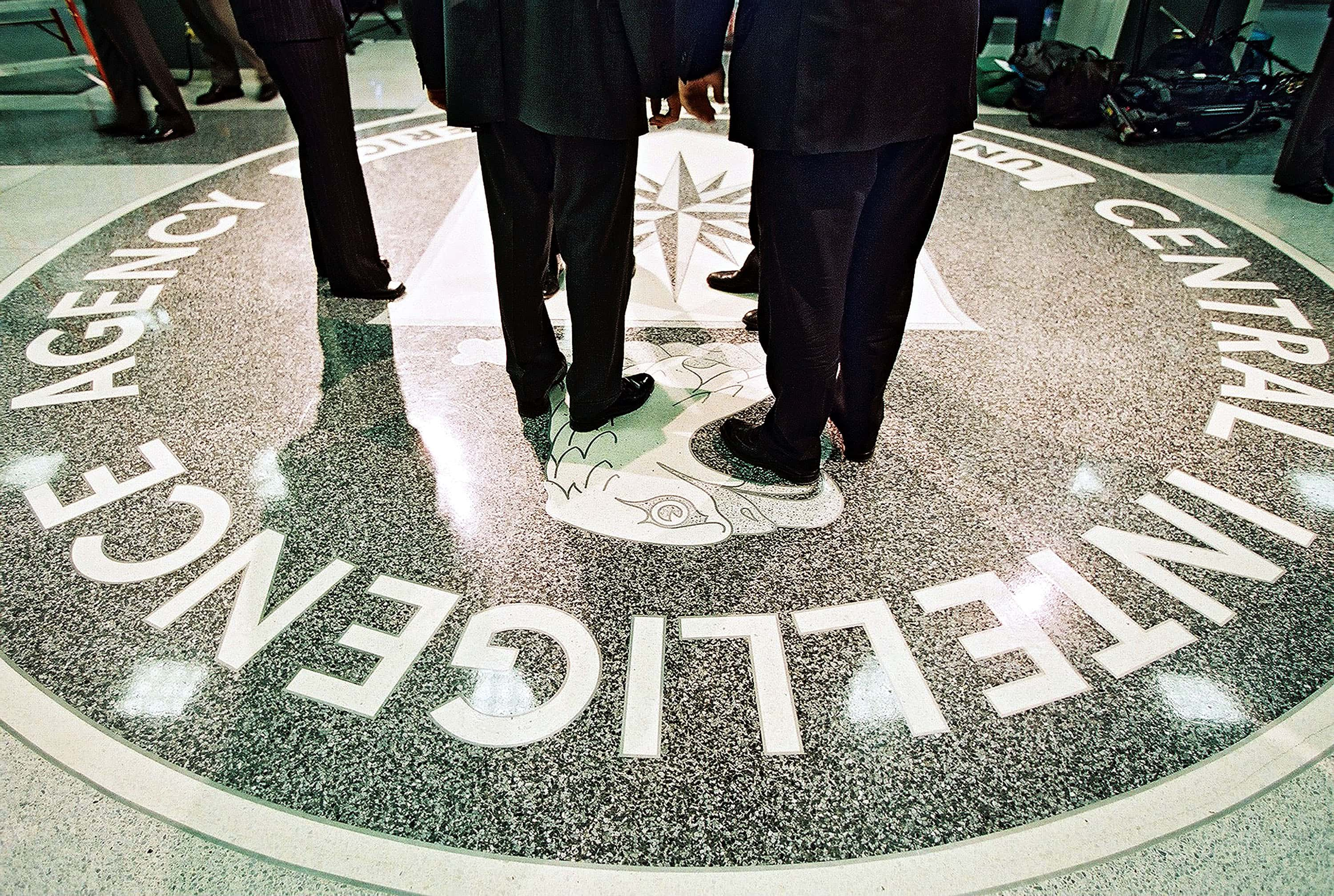Howard Hughes was a larger than life billionaire who is still famous today for his extravagant and bizarre lifestyle. He was a genius aircraft designer and pioneering filmmaker who also happened had severe obsessive habits and a dark vindictive streak. Sadly, these odd habits have overshadowed his achievements. From the strange to the obsessive to the brilliant, here are some of the most interesting facts about the Aviator himself.
1. Sister, Sister
The fabulously wealthy Howard Hughes may have turned into a disturbing recluse later in life, but in his prime, he was definitely a ladies man. During his time in Hollywood, his list of affairs grew to legendary proportions. He dated everyone from Ava Gardner to Katharine Hepburn. Scandalously, he was said to have dated sisters Olivia de Havilland and Joan Fontaine—but the truth is even darker.
While he was involved with de Havilland, he made a pass at Fontaine, who rebuffed him and told her sister the whole story. Instead, de Havilland was furious at Fontaine, and the wedge caused by Hughes contributed to even more rancor in the sisters' infamous feud.

2. He Screams For Ice Cream
Throughout his life, Howard Hughes showed a tendency toward obsessive behavior, which was easily indulged thanks to his wealth and power. At one point, he was obsessed with Baskin-Robbins’ Banana Nut ice cream. When the company discontinued the flavor, he ordered them to make an industrial-sized batch of 350 gallons. His staff traveled to Los Angeles in order to retrieve the order and then reconfigured an entire refrigeration system in order to store the ice cream—but they were in for some bad news.
Hughes had lost interest in the Banana Nut flavor. He then became obsessed with French Vanilla flavored ice cream. Of course, as the years wore in, these obsessive tendencies went from funny to disturbing, but more on that later...
3. Crash and Burn
Much of Hughes' fortune came from his business, the Hughes Aircraft Company. However, Hughes didn't just helm the company—he also frequently helmed his own product. As a trained pilot, Hughes would sometimes perform tests for Hughes Aircraft Company himself—but these tests often put him in grave danger. Hughes crashed an army prototype during a test-pilot session in 1946. Doctors gave Hughes codeine for his injuries.
Hughes would develop a dependency to codeine, and take it throughout the rest of his life.
4. Living in a Literal Tax Shelter
With a deep-seated hatred of taxes, Hughes went through elaborate plans in order not to pay any. He lived for great stretches of time in hotels in order not to have to claim an official residence, and he would jump around from location to location in avoidance. As he had no will and no children, he left the incredible wealth of his Hughes Aircraft stocks to a tax-exempt charity of his own creation called the Howard Hughes Medical Institute.
5. Cat and Mouse
According to many of the women he had dalliances with, all that Howard Hughes cared about, apparently, was the chase. Often, he would only sleep with the women he seduced once, and then try to keep them around as if he had a business arrangement with them.
 The Aviator, Warner Bros. Pictures
The Aviator, Warner Bros. Pictures
6. He Must, He Must, He Must Increase Her Bust
Hughes was a die-hard perfectionist. When making the Western The Outlaw, Hughes planned to sell the film by emphasizing the busty physique of soon-to-be-star Jane Russell, who he'd cherry-picked for the part. However, when filming began, he wasn't satisfied with the effects of gravity on her figure—and he went to extreme lengths to get the effect he was looking for.
7. Watch Out Wonderbra
While making The Outlaw, Howard Hughes designed a special, cantilevered underwire bra just for Russell, to further propel her cleavage onwards and upwards for the movie. Russell said that she found the bra incredibly uncomfortable—so she devised a way to get around wearing it. She hid the invention and wore her own bra, adjusting the straps and padding it out with tissue to fool the notorious director.
Hughes’ infamous invented bra now lives in a Hollywood museum.
8. The Man Behind the Curtain
That wasn't the only controversy on the set of The Outlaw. When Hughes presented the completed film to the Hollywood Production Code Administration, they complained about the emphasis on Russell’s cleavage. 20th Century Fox had been on deck to release the film before the censors spoke up, but they canceled it, so Hughes came up with a devious plan to get his film out.
9. No Such Thing as Bad Publicity
As they say, any publicity is good publicity, and so Hughes created a public outcry against his own film. The controversy over the content of the film spread through the press, and the more people read about it, the more they wanted to see it, creating an undeniable demand. Though it would take three years, in the end, he got what he wanted, and the film was finally released and became a smash hit.
10. Home Is Where the Heart Is
During Thanksgiving in 1966, Howard Hughes rented out the top two floors of the Desert Inn Hotel in Las Vegas. He enjoyed his time there so much, that he ended up staying through to the holidays. The hotel wasn’t too keen on this, however, and they demanded that he leave because they needed room for their high rollers to stay the holidays, and, you know, gamble.
The thing is, Hughes was comfortable in the hotel. So, instead of leaving, he just bought the place. That way, he could live there as long as he wanted—he ended up staying four years, to be exact.
11. More Than One Way to Skin a Cat
His time at the Desert Inn also saw him buy the Sands Hotel, the neighbor to the Desert Inn, all for an outrageous reason. They had a neon sign which really bothered him, and he wanted to remove it from his sight.
12. My House, My Rules
As we mentioned, Howard Hughes exhibited a wide variety of obsessive behavior, and he was very concerned about cleanliness and germs. If you wanted to be a member of his staff, you had to study and abide by a manual in order to understand exactly how he wanted to be approached and served. For instance, when he wanted canned peaches, the can had to be disinfected, washed, scrubbed, and washed again. Then, the peaches had to be poured into a bowl that no one had touched.
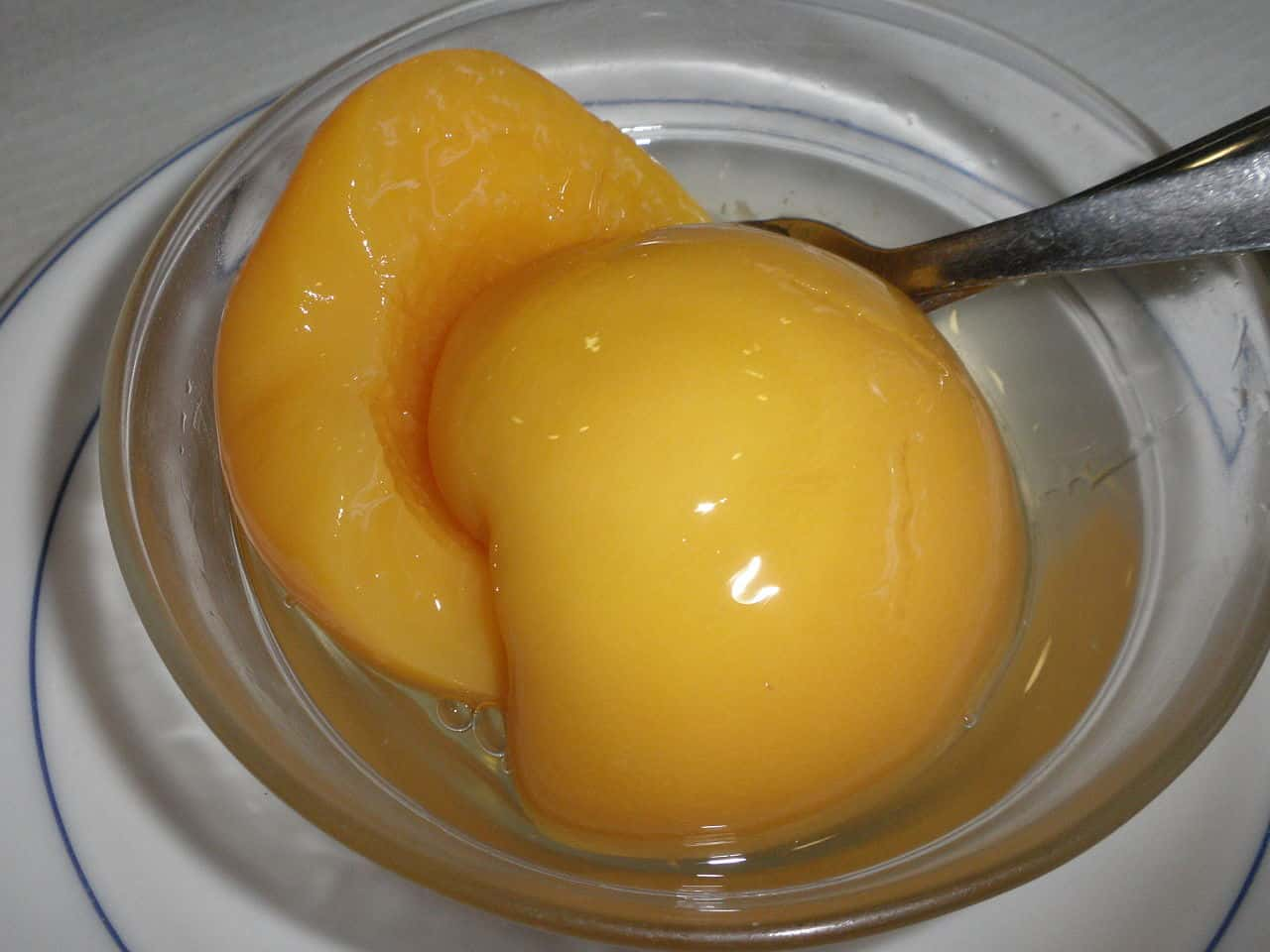 Wikimedia Commons, Larra Jungle Princess
Wikimedia Commons, Larra Jungle Princess
13. Diagnosing Disorder
Hughes' extreme perfectionism and obsession with germs were actually two sides of the same coin. It's generally accepted that he suffered from Obsessive-Compulsive Disorder, although it's unknown if he was ever officially diagnosed or treated for it during his lifetime. However, after his passing, experts traced his bizarre behavior back to a tragic source.
14. The Boy in the Bubble
Howard Hughes was born in 1905 in Texas to parents Howard Hughes Sr. and Allene Stone Gano. At the time of his birth, polio outbreaks were common, and Gano was terrified that her young son would somehow contract it—so she went to disturbing lengths to "protect" him.
She kept him mostly isolated from the outside world and the young Hughes had no friends growing up.
15. Child Prodigy
Because of his enforced house arrest by his mother, Hughes was often seen by his neighbors simply riding his bike around in circles in the family’s driveway. What they didn't know, though, was that the bike was the first motorized bicycle in all of Houston. Hughes showed an early aptitude for mechanics and engineering, and built the bike himself when he was just 12 years old.
16. Paging Dr. House...or Dr. Freud
Hughes' lonely upbringing was punctuated by an absolutely disturbing episode. When he was in his teens, Hughes became paralyzed suddenly one day, and was unable to walk for months on end. He was examined by doctors, but they never found an officially medical cause for his paralysis. Years after Hughes' passing, it was speculated that it may have been an extreme reaction to stress—one that would be echoed in his later life when he became consumed by his paranoia and obsessive behavior.
17. One-Two Punch
As if sudden explained paralysis wasn't enough, Hughes' adolescent years were marred by heartbreaking tragedy. When he was 17, his mother passed on after suffering an ectopic pregnancy. Just two years later, his father had a heart attack and passed on as well. He was an orphan at 19—but an incredibly wealthy one.
18. Too Cool for Schools
Hughes had shown that he had both brains and skill, especially in the fields of science and mathematics. He even built Houston's first "wireless" radio transmitter at age 11. Hughes had been studying at Rice University when his father had passed on, and he promptly dropped out. Soon after, he married his first wife: Ella Botts Rice—and the name was not a coincidence. She was the great-niece of the man that the school had been named for.
19. Flying High
Upon his father's passing, Hughes had inherited 75% of his fortune and part of the Hughes Tool Company. He was 18 and he had the entire world at his feet. Hughes had previously completed flight training, and he began the Hughes Aircraft Company as a division of the tool company. It was also at this point that he began to express interest in using his fortune—and the company's money—to make films.
The twin passions of aviation and filmmaking would remain constant in his life for the next few decades.
20. Built From the Ground Up
Though he was a trust fund baby, Hughes didn’t reach incredible wealth on that money alone. After years of developing his movie and aircraft companies, they became extremely profitable. The posthumous sale of Hughes Aircraft netted $5.2 billion.
21. F for Fake
In 1972, Hughes was forced out of seclusion for a bizarre reason. A man claiming to have co-written an autobiography with Hughes began making media appearances and talking about the forthcoming book. At first, Hughes did nothing to refute the man's claims, which led many to believe they were real. Finally, he made a public appearance to denounce the man, who was then apprehended for fraud.
22. Life for the Movies
Over the years, many prominent filmmakers have expressed desire to make a film about Hughes. From Steven Spielberg wanting to make a “Citizen Kane-like” film about his life to Jim Carrey wanting to star in another, everyone has been on board at some point. Eventually, it was Martin Scorsese who was the first to complete one, the massively successful The Aviator in 2004—however, it almost didn't get made.
It was such an expensive film to make that Scorsese had to dive into his own pockets and paid $500,000 in total to get the film made—just like Hughes had so many times on his own films.
 The Aviator, Warner Bros. Pictures
The Aviator, Warner Bros. Pictures
23. Go West, Young Man
With his first wife in tow, Hughes moved to Hollywood to begin his career as a filmmaker. His first few years there were filled with ups and downs. The first film he produced was a total failure. Luckily, he was able to turn it around and net a few successes throughout the early 30s—but behind the scenes, his marriage was falling apart.
His wife left him in 1929 and they divorced soon after.
24. Players Gonna Play
Fresh from his divorce, Hughes began to hit the town with a veritable who's who of Golden Age Hollywood starlets. Throughout the 30s he was linked with Bette Davis, Ava Gardner, Olivia de Havilland, Katharine Hepburn, Hedy Lamarr, Ginger Rogers, Janet Leigh, Rita Hayworth, Mamie Van Doren and Gene Tierney—among others.
25. No Joy
Dating Hughes, who already exhibited some eccentric behaviors at that time, didn't exactly sound like a bed of roses. According to the actress Joan Fontaine, Hughes “had no humor, no gaiety, no sense of joy, no vivacity […] that was apparent to me".
26. A Hellraising Production
Hughes sought to combine his two passions—filmmaking and aviation—with the movie H*ll's Angels. However, his dream quickly turned into a nightmare for everyone involved. His perfectionist demands caused the first director to quit, and he spent so much time on the silent film that by the time it was completed, talkies were becoming the more popular format—so he reshot most of the film to have dialogue.
However, it all worked out well for one woman—future It Girl Jean Harlow, who replaced a Norwegian actress with a thick accent when they made the switch from silent to talkie. Hughes handpicked Harlow for the part.
27. Crash & Burn
The reshoots weren't the only nightmarish part of production. When the head stunt pilot claimed that one of the maneuvers that Hughes had demanded was too dangerous, Hughes performed it himself—and nearly got himself killed. He crashed and suffered a skull fracture, and had to have surgery on his face as a result. His stunt wasn't the only dangerous part of filming—four pilots and a mechanic passed during the making of the film.
28. All the Money in the World
Remember when we mentioned Hughes' devious plan to drum up demand and publicity for The Outlaw? Well, that wasn't his first time messing with the press for his own benefit. Hughes was mostly working outside of the studio system, which was nearly unheard-of in those days, so he took it upon himself to get his films attention. For H*ll's Angels, he started a rumor that it was the most expensive film ever made.
While it certainly was expensive, it was a lie on the part of Hughes. It was a huge success at the box office compared to other films released at that time, but production cost so much that it was actually a net loss.
29. Shame of the Nation
Hughes was never one for subtlety, and his next film, 1932's Scarface, was accused for glorifying brutality and crime. He was forced to reshoot some scenes several times, but you can't please everyone all the time, and the film was still banned in some places. Hughes was so furious that he actually removed the film from circulation and kept it in his vault for decades. It was only released from the vault in 1979.
30. Not on My Watch
After producing so many films on his own, Hughes decided to use some of the Hughes Tool Company assets to purchase shares in the flagging company of RKO Pictures and save it from the brink of ruin. Nearly overnight, RKO went from producing a few dozen films a year to under 10, and he laid off 700 people. Was he trying to secure his investment? No. Hughes' reasons were actually much darker.
31. Scared Red
Buying into the “Red Scare,” Howard Hughes was so paranoid about the threat that he thought communism posed to the United States that he frantically published articles about its danger—and it went way beyond that. He shut down production at RKO Pictures for half a year in order to conduct investigations into the entire staff there in order to make sure that there weren't any communist sympathizers in the bunch.
32. The Fastest Man in the World
When Hughes wasn't terrifying his employees, he was preoccupied with breaking flight records—and he had his eye on one record in particular. He wanted to beat a record set in 1933 for fastest flight around the world, and after months of preparation, he set out to do just that in July 1938. Hughes got exactly what he wanted, breaking the record by completing the flight in 91 hours.
While he'd been somewhat well-known before, this made Hughes more famous than ever, and he was given a ticker-tape parade in NYC for his accomplishment.
33. Dance With Danger
Of course, it wasn't all breaking records and celebration—Hughes' obsession with flight had a dangerous dark side. Throughout his flying career, he was involved in no less than four near-fatal accidents, and each took a severe toll on his physical and mental health.
34. I’ve Got Friends in High Places
When WWII broke out, dollar signs must have flashed before Howard Hughes’ eyes. He saw the need for bomber planes, and quickly set out to design the Hughes D-2. At the time, Hughes was actually friends with the president’s son, Colonel Elliott Roosevelt. After the army bought 100 of another type of Hughes plane on Roosevelt’s recommendation, Hughes tried to convince them to pay for him to develop the D-2, but it was another lost cause.
35. Dangerous Games
Hughes next big project was an amphibian aircraft called the Sikorsky S-43—and it was his most disastrous endeavor yet. He tested it a number of times before loading up with aviation inspectors, employees, and his girlfriend at the time, starlet Ava Gardner, in order to perform qualifying tests. Luckily he dropped Gardner off in Vegas, as the plane crashed in Lake Mead on the subsequent flight.
The crash took the lives of one inspector and one of his employees—but for Hughes, the worst was yet to come.
36. Planes Weren’t the Only Problem
While out one night in Los Angeles, Howard Hughes struck a pedestrian with his car, who later passed from his injuries. Immediately, conflict arose surrounding the circumstances of the accident. Hughes was certified sober at the hospital—but one doctor noted that he seemed intoxicated. A witness claimed that speed and erratic driving had been the cause—and so Hughes was booked for negligent homicide…but the story didn’t end there.
37. He Said He Said
While the witness had initially claimed that Hughes had been driving erratically before he hit the victim, who was standing in the safety zone of a streetcar stop, he soon changed his tune and claimed that the victim had actually stepped out in front of Hughes’ car. Strange, to say the least. The woman who had been in the car with Hughes parroted that story, and Hughes was ultimately found to be without blame for the accident.
38. First & Last
In 1946, when the first prototype of the Hughes XF-11, an Air Force reconnaissance aircraft, was ready, Hughes wanted to be the one to perform the first test flight on it—however, it would also be the last flight. When an oil leak sprung, Hughes did everything he could to save the plane, attempting to land it on at the Los Angeles County Gold Club—but he didn’t quite make it there.
39. Missed the Mark
Instead, Hughes crashed in the Beverly Hills neighborhood that surrounded the golf club. The plane immediately caught fire and Hughes dragged himself out of the wreckage before passing out nearby. He was rescued from the flames by a Marine named Sgt. Durkin. One of Hughes’ biographers said that Hughes went on to send Sgt. Durkin a check every month for the rest of his life for his heroic deed.
40. The Aftermath
Hughes had been through his fair share of crashes before, but none was as bad as the XF-11 crash. The aftermath was devastating—he was covered in third-degree burns, his collarbone was crushed, his ribs were cracked, and worst of all, his chest had been crushed so bad that his left lung had collapsed and his heart had shifted to the right side of his chest.
41. Down But Not Out
Hughes was bedridden following his accident—and promptly, the famously obsessive perfectionist got real sick of his bed and designed a customized, motorized bed that could be controlled by the patient. While he never used his own invention, it became the precursor to the modern hospital bed.
42. Daddy’s Little Helper
During WWII, Hughes pushed to develop a flying boat that would help transport troops safely across the Atlantic—and it would quickly turn into one of the most disastrous and controversial endeavors he’d ever been involved with (and he was involved with a lot of those). Once again, Colonel Elliott Roosevelt got involved and helped push for the develop of the H-4 Hercules, as it would be a called—a move that he would come to regret.
43. The Goose Is Loose
Materials were scarce during WWII, and as a result, the Hercules was built from wood, earning it the unflattering nickname of the “Spruce Goose,” even though the wood used was actually birch. When it was completed, it was the world’s largest flying boat and the largest aircraft made from wood—there was just one problem.
44. Better Late Than Never?
By the time the Hercules was completed, WWII had ended. That’s right, it was a (flying) boat that missed the boat. It also only ever performed one flight, for just one mile, in 1947—with Hughes at the helm, of course. The trouble didn’t end there, though.
45. Follow the Money
After the conflict ended, a Senate committee was called to investigate army expenses, and a Senator from Maine named Owen Brewster had his eye on Hughes and the Spruce Moose. Both Hughes and Colonel Roosevelt were eventually called to testify and to explain why $40 million from the War Department had been awarded to Hughes for a product that was never delivered—but Hughes quickly turned the tables.
46. Playing Monopoly
Throughout WWII, Hughes had quietly gained controlling interest in the airline TWA, and at the hearings, he accused Senator Brewster of having close ties to its rival, Pan-American Airways, and said that Brewster had accepted bribes to push legislation that would give Pan-Am a monopoly on Atlantic flights—and his accusations got even more jaw-dropping.
47. Revenge Is a Dish Best Served Cold
Hughes claimed that Brewster had approached him and offered to stop the hearings if he would merge TWA with Pan-Am—and he didn’t stop there. Even after Brewster resigned as chairman of the Senate committee, Hughes badgered him as a witness at the hearings. Eventually, the hearings were largely seen to have gone in Hughes’ favor, but he still spent $60,000 and the next few months running a candidate opposite Brewster and spreading rumors about his alleged communist sympathies.
Ultimately, Brewster lost his Senate seat and retired soon after—all because he went up against Hughes.
48. The Bad Touch
Following the war, Hughes dipped back into the world of filmmaking. RKO Pictures seemed like it would have a guaranteed hit with their 1951 film His Kind of Woman. It matched stars Jane Russell and Robert Mitchum, and featured the talent of a young Vincent Price. Filming went off without a hitch—but then Howard Hughes stepped in.
49. Movie Star Surrogate
The illustrious Robert Mitchum was handpicked by an aging Hughes to be featured in many of his films during the 1950s. Mitchum confessed that he suspected Hughes was living vicariously through him. After all, his womanizer lifestyle had slowed down and all the car and plane accidents had taken their toll on Hughes physically. The roles that Mitchum was cast in by Hughes would often feature the young actor romancing different beautiful starlets.
50. Film Purgatory
With filming on His Kind of Woman completed, the cast looked forward to moving on to the next film project—but there was a dark twist around the corner. Howard Hughes had already taken years out of Russell’s career with delays over the release of The Wild One, and he took another year with his taxing demands for reshoots of His Kind of Woman.
When Hughes' demanding reshoots hit the year mark, Vincent Price threw an “anniversary party" for the film, while Mitchum expressed his frustration by getting into a full-on brawl with stuntmen on the second-to-last day of filming.
51. The Hughes Method
Hughes was a man of routine—and obsession. Every night he ate the same dinner: a New York strip steak served medium rare, a salad, and peas. But he couldn't begin his meal without arranging the peas in order by size on his plate first.
52. Studio Time
In 1958, Hughes decided that he wanted to take a breather and watch some movies. He arranged to rent out a film studio on Santa Monica Boulevard from Goldwyn Studios to his own private viewing party—but the situation quickly spun out of control. His binge-watching session went on for a full four months. During this time, he never left the studio once—but that wasn't the worst part.
53. Movie and a Treat
This was when Hughes really began to fall into the disturbing habits that would follow him for the rest of his life. First, Hughes got comfortable by wearing nothing but a towel around his waist and feasting on just three foods: chocolate, chicken, and milk. He stopped bathing or cutting his nails or hair.
54. Water of Life
This was also where, as far as we know, another of Hughes’ more, uh, bizarre, behaviors began. While he was locked in the studio for four months, he didn't even leave to use the bathroom and began to store his urine in jars. However, it was hardly an improvement from his bathroom habits before this all happened. His staff revealed that he'd always had awful aim while using the toilet.
55. Fix Yourself Up
When Hughes was still participating in public life, his obsessive tendencies would sometimes take over. If someone he was talking to or doing business with had stains or other imperfections in their clothing, he would refuse to speak to them until they fixed the problem. Of course, because of his money and power, many went along with it.
56. Marriage Games
Hughes’s second and final marriage was to the actress Jean Peters in 1957. The marriage lasted 14 years, but behind closed doors, Peters was living in a bizarre nightmare. They eventually moved into separate houses and only saw each other a few times a year. Regardless, Hughes planned Peters' entire life for her.
Hughes mainly communicated with her through memos. These memos counted into the hundreds of thousands.
57. Click-Clack
When Hughes and Peters did live together, they had separate refrigerators, and Peters had to put tissues in between Hughes’s toenails since he refused to cut them and their clicking on the floor reached unbearable volumes.
58. Keeping Silent
After their divorce, Hughes—who had Peters watched throughout their marriage—bought a house adjacent to hers so that he could continue to keep tabs on her. Through it all, however, Peters never shared any of what happened between her and her reclusive ex-husband, so most of the details will never be known.
59. Buy Stock in Kleenex
Hughes had an obsession with tissue. He used it to pick up objects that he thought were covered with germs. When he was locked in the movie studio for four months, he would continuously arrange and rearrange Kleenex boxes. And, at some point, Hughes' aversion to germs became so great that he would actually walk around with tissue boxes on his feet.
He believed that actions like this somehow insulated him from germs.
60. Now That's a Binge Watch
Just because Hughes eventually left the film studio after spending four months there didn't mean that his insane movie-watching habits changed. He then went to the Beverly Hills Hotel, where he took over a sizable chunk of the property for his staff, wife, and various girlfriends. He continued to sit for hours or days at a time watching movies undressed, covering his privates with a napkin—but some suspect a disturbing cause behind his aversion to clothing.
61. The Bad Touch
Hughes may have been suffering from allodynia, which is when a pain response is triggered by things that wouldn't normally cause pain—in Hughes' case, wearing clothing and cutting his nails or hair may have caused him physical pain. On top of this, the movies may have helped distract him from the pain he felt.
62. Now That's D.I.Y.
Throughout the 60s, Hughes continued to move from hotel to hotel before eventually settling in at the Dessert Inn, which, as we previously mentioned, he bought so that he wouldn't have to leave. It was here that he truly shrank into the reclusiveness that he would come to be known for from there on out. He continued to love movie-watching, but the television stations in the area did not satisfy him, so he bought his own station, KLAS, and aired only movies on it 24 hours a day.
63. Play It Again, KLAS
Hughes’s favorite movie during this time was the 1968 Rock Hudson film Ice Station Zebra. He loved it so much so that he had KLAS run it on loop for years. Often, he would even call up the station and have them rewind the film for him.
 Ice Station Zebra, Metro-Goldwyn-Mayer
Ice Station Zebra, Metro-Goldwyn-Mayer
64. Medical Money
After the tragic early passing of his parents, Hughes became obsessed with science and health. In 1953, he launched the Howard Hughes Medical Institute. The research facility also operated as something of a tax shelter for Hughes. Regardless, it went on to become a massive player in the field of biomedicine. It is the world’s second-largest medical research foundation in terms of financial resources, with $18.2 billion in endowments.
65. The Mormon Mafia
Even if he hadn't been an eccentric recluse, Hughes wouldn't have been left to oversee the massive fortunes that he and his companies were in possession of. The panel that helped Hughes control his assets had the nickname of the "Mormon Mafia," due to the high number of Latter-Day Saints on it. However, since they had little power, he could boss them around as he pleased, and they had to cater to his every financial whim.
66. May I Speak to the Manager?
When Hughes was living in Las Vegas, underground nuclear testing was going on at the Nevada Test Site. Hughes was deeply disturbed by this, and after a particularly strong detonation sent shock waves to the area he was staying in, he took his complaints straight to the top: Hughes attempted to pay off two successive presidents, Lyndon B. Johnson and Richard Nixon, to stop the tests with a cool million each.
67. I'll Scratch Your Back if You Scratch Mine
Hughes had never been shy about bribing people, especially politicians. He knew his wealth gave him an enormous amount of power and he wielded it to his benefit. He didn’t necessarily care about party affiliation and worked both sides of the spectrum. After Richard Nixon’s election, he gave him a personal gift of $100,000, which went to his home renovation. He also gifted Nixon's brother more than $200,000.
68. Scandal of the Century
Few know, but Howard Hughes had a direct connection to the scandal of the century. Hughes' payouts didn’t always benefit the politicians he worked with in the long run. Case in point: Richard Nixon. It was Hughes’s Director of Operations, Robert Maheu, who Nixon’s re-election team was worried about, as he had ties to the Democratic strategist Larry O’Brien.
 Getty Images
Getty Images
69. He Said What About Me?
Don’t recognize the name? O’Brien was the guy whose phone the Watergate burglars were attempting to tap. There had been a rumor that the Democrats were going to expose a connection between Hughes and Nixon. Nixon had been so curious about it that it may have partially caused the Watergate break-in. Funny thing is, Nixon acted on misinformation, as O’Brien had no information about his previous dealings with Hughes.
70. Cover Me
Hughes was fully a recluse by the 70s. He may have been controlled by his mental illness and obsessive compulsions, but he was still sharp as a tack. In 1972, in the Cold War era, he was actually enlisted by the CIA to help them resurface a Soviet sub that had sunk near Hawaii, that they suspected held nuclear arms and a codebook. They used his company name and resources to hide their involvement—after all, Hughes had always tried to salvage his lost aircraft whenever he'd crashed it.
71. Project Azorian
While they lost half of the Soviet submarine during the operation, they recovered two nuclear-tipped torpedoes and some cryptographic machines—and the bizarre tale didn't end there. They also surfaced six Soviet submariners, who were then given a proper burial. The connection between Hughes, the mission, and the CIA might never have come to light but for the fact that Hughes' office was robbed in 1974.
The burglars released the secret documents that they'd found a year after.
72. Wasting Away
Hughes was on a steady diet of Valium later in his life, and it took a dire toll on his body. After he suffered a fall at his home in 1972, doctors noted that the 67-year-old Hughes now was in the condition of someone 20 years older.
73. Shell of a Man
An autopsy found that Hughes' kidneys had failed after years of misusing prescription meds. At the time of his passing, an emaciated Hughes weighed only 87 pounds. He was covered in bedsores and had broken-off syringes in his arms. He was so unrecognizable that the FBI had to fingerprint the body to determine that it was actually him.
74. Knives Out
It's a tale as old as time: rich person passes away, and the bugs crawl out of the woodwork to try and get a piece of his estate. Hughes hadn't properly updated his will, but then, three weeks after he passed, one mysteriously appeared on the desk of an official of The Church of Jesus Christ of Latter-Day Saints in Salt Lake City, Utah. It became known as "the Mormon Will," and its origin story is utterly unbelievable.
75. Good Samaritan
The hand-written will contained endowments for charities and inheritances for many who worked at his company, his personal staff, and a handful of cousins. But one name stuck out: $156 million to gas-station owner Melvin Dummar. When pressed for his connection to Hughes, Dummar said that, in 1967, he'd found a disheveled man wandering alongside the highway. He gave the man a ride, and the man said that his name was Howard Hughes—and the story didn't end there.
76. Leave No Trace
After Hughes passed on in 1976, a strange man appeared at Dummar's gas station and gave him the hand-written will. Dummar didn't know what to do with it, he delivered it to the Latter-Day Saints church office. It took a two-year court battle, but the will was eventually declared invalid, meaning that Hughes had passed "intestate" (without a will).
 Flickr, Marco Verch
Flickr, Marco Verch
77. The Final Battle
Battles over the estate continued, and an actress named Terry More even came forward to claim that she and Hughes had gotten married in 1949 and never divorced. Ultimately, a psychological autopsy was performed on Hughes in order to clear the record for his decisions later in life. Unlike a regular autopsy, the psychological autopsy is performed by a psychologist, who researched and recorded Hughes' behavior in the final years of his life and drew conclusions about his mental state from it.
Eventually, his estate was split between his cousins and the Howard Hughes Medical Institute.
78. Permanent Vacation
In the final years of his life, Hughes moved from luxury resort to luxury resort, from Nicaragua to the Bahamas to Mexico to Florida. The phrase "he died doing what he loved" is cliche, but it was reported that Hughes passed on board on aircraft that was taking him from Mexico to a hospital in Houston. Sadly, his gruesome condition revealed just how dark things got in his final years.
79. You Can't Say No to Me
When it came to the ladies, Howard Hughes got around—but not everyone wanted him. Actress Jean Simmons learned the hard way that he didn’t take rejection well. Simmons denied Hughes’s advances. As a result, the tycoon sabotaged her career. As she was under contract to Hughes, he made sure to make her life a nightmare during filming by ordering directors to treat her as rough as possible and preventing her from taking other offers.
80. The Surrogate
Once, under orders from Hughes, director Otto Preminger continually instructed Simmons' co-star Robert Mitchum to smack her harder and harder while filming a particular scene. Mitchum turned and punched Preminger in the face. Mitchum then asked the director if that's how hard he wanted it. Simmons sued over her contract and won.
Sources: 1, 2, 3, 4, 5, 6, 7, 8, 9, 10, 11, 12, 13, 14, 15, 16, 17, 18


































